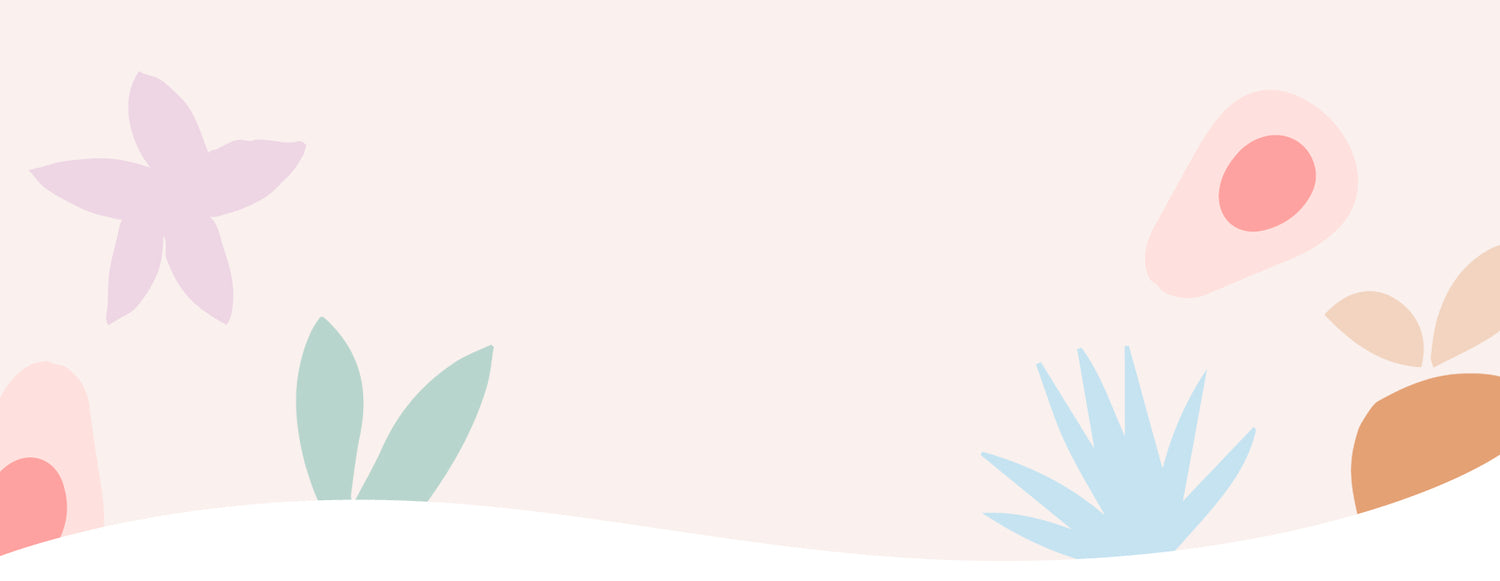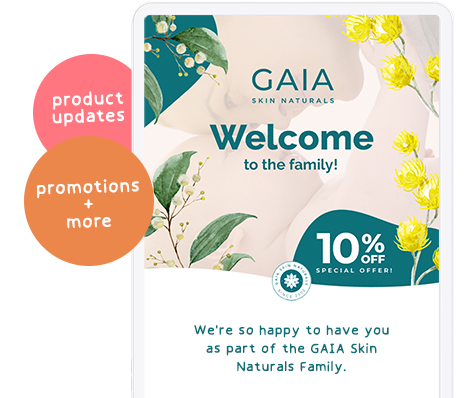Babies have sensitive, thin skin which is fragile and prone to rashes. In the first few months after birth, their skin is still developing and is less resistant to bacteria and irritants which can penetrate their skin and can cause it to react.
One of the best ways to prevent skin irritation is to maintain the moisture balance. Looking after the baby’s skin also helps to prevent any breakdown in the skin barrier which can lead to problems in the future.[1]
Healthy baby skin looks intact, with no redness, rashes or breaks in the skin. It’s also not scaly or dry, and has a healthy pink colour, which shows a good blood supply.
Head
Wash your baby’s head gently with a soft washer when bathing. It’s fine to use a pH-neutral baby wash as shampoo on their head. Don’t forget to wash gently behind your baby’s ears and wipe over your baby’s eyebrows – there can often be a build-up of crusty skin in these areas if they’re not cleaned.
If your baby has cradle cap, massage olive, almond or vegetable oil into their scalp. You can buy special cradle cap softening products which help to loosen the crusts so they’re more easily washed off. Use your fingertips to massage their scalp and remove the crusts. After washing, dry your baby’s head with a soft towel and brush their hair with a baby brush.
If there is a thick build-up of crusts, it can take a couple of applications of a softening product, massage and scalp washing for cradle cap to resolve. You could also try using a soft toothbrush or cotton bud to lift the crusts once they’ve been softened.
Face
It’s not uncommon for babies to have a type of acne on their face. This is called neonatal or infantile acne which generally gets better without any special treatment. Infantile acne is thought to be caused by hormonal influences which can cause over-activity of the skin’s oil glands.
Babies can also develop milia or ‘white spots’, most commonly on their nose and across their cheeks. These are small white spots just under the surface of the skin. They are caused when flakes of keratin (skin protein) collect just under the skin’s surface. There is no special treatment for milia, which generally resolves on its own without any special treatment.
It’s important not to squeeze or pick at your baby’s face. Doing this could cause scarring and/or infection. Wash their face when you bath them and avoid using any soap or bath wash. Have your baby examined by a doctor if you’re worried about your baby’s facial rash.
As a general guide:
Facial rashes:
- Are more obvious when a baby is hot or crying.
- Look better when the baby has just woken from a sleep.
- Come and go at different times of the day.
- Are less irritated when in contact with natural fibres. Use light cotton, bamboo or linen fabrics for your baby’s clothing and bedding.
Eyes
You don’t need to do anything special to clean your baby’s eyes. During their first year of life, their eyes will still be developing, including their ‘blink’ reflex. This increases the risk of bath products getting into their eyes and causing irritation, so it’s wise to be particularly careful about the products you use.
Simply use a soft washer or cotton wool balls to clean your baby’s eyes. Wipe gently from the inner to the outer eye. If you notice your baby has ‘sticky eyes’ or have been told they have a blocked tear duct, clean the affected eye last. This will help to reduce the risk of contamination to the healthy eye.
Nails
Your baby’s finger and toenails will be very soft, almost like an extension of their skin. If your baby is scratching their face and their nails are long, you will need to trim them. Use purpose designed baby nail scissors or clippers. You could also use an emery board to file down their nails. Pick a time of day when the light is good and your baby is calm and you’re not rushed. Get someone to help you to hold your baby’s hands and feet still while you’re trimming their nails.
Skin
Bath your baby using a mild, soap free cleaner in warm tap water. Ideally, look for a baby wash which is pH neutral and doesn’t include strong fragrances or anti-bacterial agents. Bath your baby daily, or at least a few times each week.
Check your baby’s skin for any rashes, redness or irritation. If you notice your baby’ skin is reacting to a particular product, stop using it and wait for their skin to settle before trying something else.
Nappy area
Babies are prone to nappy rash because their skin is sensitive and wee/poo are acidic. Skin rubbing from nappies can also lead to irritation and skin damage.
The key to avoiding nappy rash is to:
- Change nappies frequently – at least six or more times/24 hours.
- Using good quality disposable nappies if possible – these tend to draw moisture away from the skin. Otherwise, use cloth nappies which are designed to be fully absorbent.
- Use plain water or non-perfumed baby wipes to clean their skin at each nappy change.
- Use a barrier cream which contains zinc or other thick, protective agent. This will help protect the skin from being in contact with wee/poo.
- Plan for some nappy free time each day.
- Avoid using talcum powder on baby’s skin.
Feet
The skin on your baby’s feet may be wrinkled and dry, especially if they were born past their due date. It can help to gently moisturise dry skin with a non-fragranced cream or lotion. Another option is to use oil in their bath.
Each time you bath your baby, apply moisturiser to their skin as soon as possible after bath time. This is when the pores of their skin will still be open and the moisturiser will be more easily absorbed.
Bathing your baby
Avoid using soap or baby wash which is strongly perfumed. Choose a soap-free baby bath wash which is suitable for babies’ skin.
When your baby’s skin is dry, rub in a little non-fragranced moisturiser all over their skin. This will help to maintain their skin’s moisture barrier.
Use a scent free, ‘sensitive’ laundry detergent to wash your baby’s towels, washers and cot linen if you think they may have particularly sensitive skin. Sometimes it’s helpful to double rinse baby laundry to remove all traces of detergent.
5 General tips about baby skin
- Some babies are more prone to skin conditions. If there is a family history of eczema or other skin issues, the baby may be also be susceptible.
- In summer, skin rashes tend to be more common. Heat rashes in babies are generally due to immaturity of the sweat ducts which affects their ability to cool down. Avoid using thick lotions or creams on their skin which can block the pores. You may need to bath your baby a couple of times each day to help them cool down when the weather is hot.
- Use sunscreen on babies aged over six months of age. Ideally, keep them out of the sun altogether. If this is unavoidable, make sure you place a wide brimmed hat on your baby and cover their skin with suitable clothing. Stick to shady areas and air conditioned or cool locations if you can.
- Birthmarks can appear anywhere on a baby’s skin and aren’t always present at birth. Sometimes birthmarks get larger before they start subsiding. It’s particularly important to use sun protection on birthmarks. Have your baby checked by a doctor if you notice any birthmarks – there are benefits in having these regularly reviewed.
- It’s useful for parents to check their baby’s skin each time they’re bathed. When your baby is naked will be the best time to do a quick ‘once over’ check. Baby skin rashes can appear quickly and treatment may be needed to stop them becoming worse. Skin irritations can also cause general irritation and unsettledness. Check with your doctor if you’re concerned.
Written for GAIA by Jane Barry, Midwife and Child Health Nurse, March 2023.
[1] Kids Health Information : Skincare for babies (rch.org.au)



